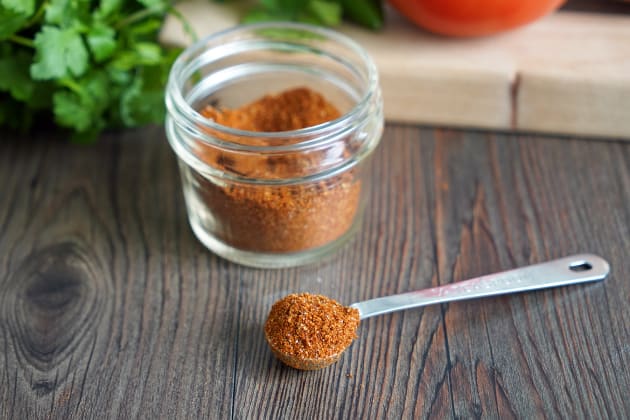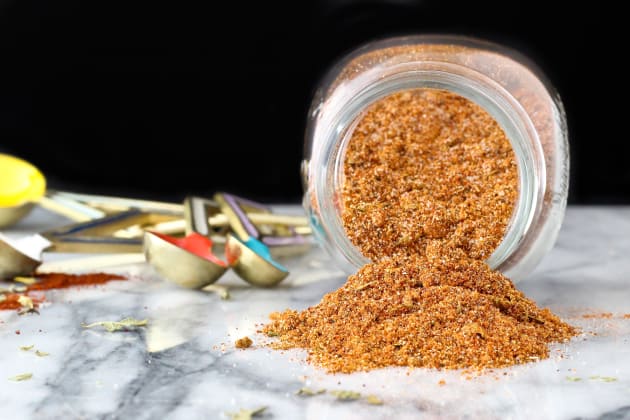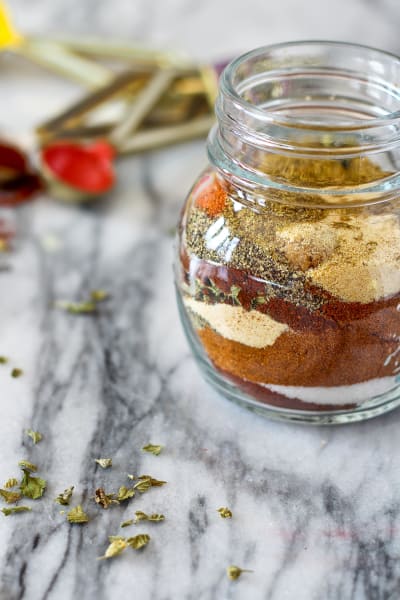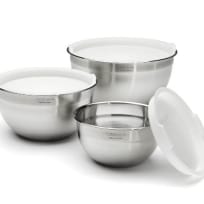Spicy Seasoning Rub
Cyd ConverseThis delicious spicy seasoning rub is perfect for roasting or grilling chicken, pork, fish and more.
Making homemade spices adds so much flavor to food and this spicy seasoning rub helps take the flavor of your meat or poultry to the next level.
Not only does it enhance the taste, but it can also add texture to certain food, too! Plus it's easier than easy to make.
Take my word for it...or make it yourself and see!
What Is the Difference Between a Marinade and a Dry Rub?
Many people get confused about the difference between a marinade and a dry rub - or whether a difference actually exists at all!
Well, the biggest difference is that a marinade helps to tenderize the meat you are using, whereas a dry rub does not.
Marinades usually contain an array of spices, plus an acidic liquid like vinegar, citrus or wine.
The acid helps to tenderize tougher cuts of meat, making marinades great for certain cuts of steak, pork and chicken.
Unlike a marinade, a dry rub does not contain any sort of liquid.
Dry rubs can be used prior to cooking or throughout the process, but to ensure you get the most flavor, we recommend using the rub at least an hour before you start cooking.
Dry rubs can add texture to some foods, creating a delicious crust of sorts, especially on cuts like brisket, ribs, steak and some kinds of fish.
Are Dry Rubs Better Than Marinade?
Ok, so are dry rubs better than marinade? Well, that depends. It depends on what you're making and what kind of results you desire.
The issue you may occasionally find with marinades is that they often can rinse off the meat, thus reducing the amount of flavor.
A dry rub stays put during the cooking process to help create a beautifully textured exterior.
What's more, the sugar used in a dry rub caramelizes during the process - and nothing beats that!
Finally, dry rubs don’t add any extra moisture to meat. This is important when it comes to searing, because any moisture on the surface must evaporate first.
A cut of meat covered in liquid won’t develop a lovely sear like a cut of meat with a dry rub would and often times a sear results in a more flavorful, juicy cut of meat.
Of course, you can add liquid into the dish once the meat has developed a browned exterior.
Just brush your meat with the liquid of your choice towards the end of the cooking process, being sure not to cross-contaminate it with liquids that have touched raw meat or poultry.
How To Make the Best Homemade Dry Rub
If you really want to make your spice rubs pop, we have a great trick that seriously intensifies their flavor.
Just heat a frying pan over medium heat and add all of your spices. Stir or shake them, but keep them moving.
If they sit still on the heat for 10 seconds or more, they are likely to burn.
In just two minutes, you will notice how fragrant the spices become. At this point, transfer them back into a bowl to cool.
There can be debate over whether you should physically rub the rub onto your meat or just sprinkle it.
It is thought by some that rubbing it in will cause the juices in the meat to escape, although we do not find this to be true.
Rubbing the spices on helps them stick to the meat better and you can get into all of the nooks and crannies to maximize flavor.
So the next time you want a little kick with your dish, give this spicy seasoning rub a try! You'll be glad you did.
Planning a dinner party and need some inspiration?
How about looking for a new slow cooker dinner idea?
We’ve got you covered in our ever-growing Facebook group! If you’re not a member yet, why not?!

We’re chatting cooking techniques, dessert ideas, and everything in between. If you’re already a member, invite your friends to join us too!
Spicy Seasoning Rub
Ingredients
- 1 tablespoon Brown Sugar, packed
- 1 1/2 teaspoons Paprika
- 1 teaspoon Dried Oregano
- 1 teaspoon Kosher Salt
- 1 teaspoon Garlic Powder
- 1 teaspoon Onion Powder
- 1/4 teaspoon Black Pepper
- 1 teaspoon Chili Powder
Directions
- Combine all ingredients together in a bowl or an airtight container then stir or shake to combine.
- Store in airtight container.
- When ready to use, rub seasoning on poultry or meat to coat then cook per usual.
Recommended
- Published:
- Modified:
- Author:
- Cyd Converse
- Cuisine:
- Tex Mex
- Category:
- Homemade Spices
- Tags:
- Homemade Spices, Spicy, Tex Mex
- Related Recipes:
- Homemade Spice Recipes, Spicy Recipes, Tex Mex Recipes
- Recipe Yields:
- 4 servings
- Prep Time:
- Related Posts:
-
Published:
Author: Cyd Converse
Recipe Yields: 4 servings
Prep Time: 5 minutes
Nutrition Facts
Amount Per Serving












